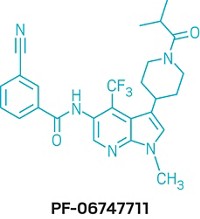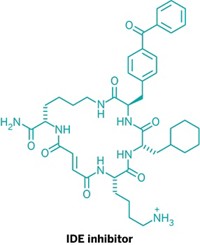Advertisement
Grab your lab coat. Let's get started
Welcome!
Welcome!
Create an account below to get 6 C&EN articles per month, receive newsletters and more - all free.
It seems this is your first time logging in online. Please enter the following information to continue.
As an ACS member you automatically get access to this site. All we need is few more details to create your reading experience.
Not you? Sign in with a different account.
Not you? Sign in with a different account.
ERROR 1
ERROR 1
ERROR 2
ERROR 2
ERROR 2
ERROR 2
ERROR 2
Password and Confirm password must match.
If you have an ACS member number, please enter it here so we can link this account to your membership. (optional)
ERROR 2
ACS values your privacy. By submitting your information, you are gaining access to C&EN and subscribing to our weekly newsletter. We use the information you provide to make your reading experience better, and we will never sell your data to third party members.
Medicinal Chemistry
Small molecule advances the hunt for a psoriasis pill
With some well placed methyl groups, the compound shuts down a key nuclear hormone receptor
by Megha Satyanarayana
September 11, 2018
In the roughly $11.5 billion market for psoriasis treatments, injectables and intravenous drugs get the most attention—and airtime. But a team of scientists at Pfizer is among those looking for an easier-to-take oral medication to tackle this inflammatory disease and its close cousins such as psoriatic arthritis. In the Journal of Medicinal Chemistry, the researchers now report a molecule that may bring the field closer to such potent, longer-lasting candidates. (DOI: 10.1021/acs.jmedchem.8b00392).
The compound targets a nuclear hormone receptor called RORC2 in T cells. This receptor is constantly active, turning on gene expression in signaling pathways such as one involving the inflammation-triggering cytokine IL-17. That cytokine is itself a target for biologic treatments for psoriasis. Researchers looking for small molecules to turn off RORC2 have struggled because of its highly lipophilic ligand-binding domain.
The key to the new molecule’s success came during its optimization in the form of well placed methyl groups, lead researcher Mark Schnute says. These groups boosted potency, he adds, and one in particular fixed the rotation of an amide enough to enhance its ability to bind to the ligand-binding domain of RORC2.
“We had some very key magic methyls,” he says. “One of those methyls was critical because it told us how to drive potency by constraining the rotation, and that drove a very long dissociation rate.”
Schnute’s team tested the compound in mice with a psoriasis-like condition. Swelling in the mice’s affected areas went down, as did levels of IL-17.
Finding molecules that target sites upstream of IL-17 is a good idea because they can more broadly hit the proinflammatory pathway, says Megan Levings, the head of the childhood diseases program at BC Children’s Hospital and a researcher in the field of inflammatory diseases. But she cautions that blocking the nuclear hormone receptor might affect expression of other genes with unknown side effects.
Nonetheless, she says, in terms of clinical care, “a pill would be way better for patients.”
Schnute agrees but wouldn’t comment on whether Pfizer was developing the compound further, only that the molecule is available for others to investigate. And Pfizer is not alone in the hunt; for patients for whom injections and infusions are a burden, a pill may be magic—medicinally for the patient, and financially for the company that gets it to market.





Join the conversation
Contact the reporter
Submit a Letter to the Editor for publication
Engage with us on Twitter